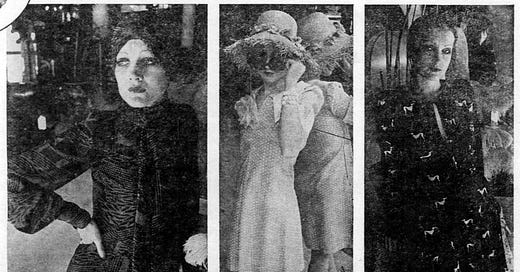Continuing from my last newsletter on Biba’s American expansion in 1971…
According to Barbara Hulanicki, when she and her husband, Stephen Fitz-Simon, were in New York for the McCall’s sewing pattern launch at Macy’s in early January 1971, they asked Seventeen fashion director Rosemary McMurtry for an introduction that might help them bring the Biba Cosmetics line to America; at the time, the couple supposedly had no desire to wholesale the clothing in the United States. McMurtry put them in touch with Colette Touhey, the merchandise manager of Bergdorf Goodman’s sixth floor, the luxury department store on Fifth Avenue across from the Plaza Hotel. As Hulanicki later recalled in her 1984 autobiography From A to Biba, “Colette is a really go-ahead buyer with a strong personality and over breakfast at the Plaza she convinced us that we should launch a small version of Biba on the sixth floor of Bergdorf Goodman. Fitz and I were both fairly hung over and as we drove to the airport we looked at each other and said, 'What on earth have we done? We have just agreed to do exactly the opposite of what we planned.’”
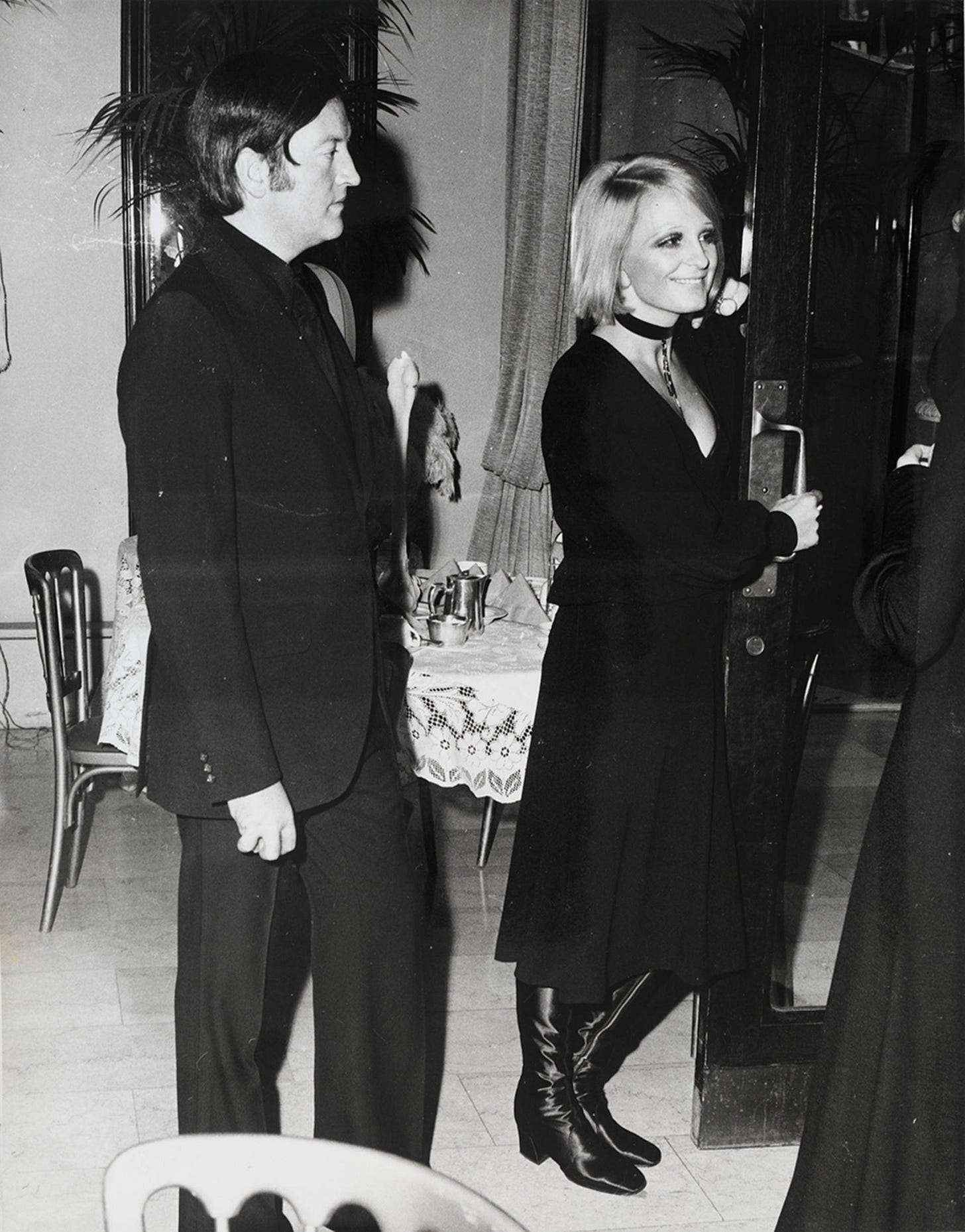
While it is likely that McMurtry was responsible for their meeting Touhey, the timing for the Biba-Bergdorf Goodman deal appears to have been reached months earlier. Women’s Wear Daily announced Biba’s expansion to Bergdorf’s in October 1970, three months before the Macy’s launch and several weeks before the newly packaged and expanded cosmetics collection premiered in Dorothy Perkins shops across the UK. By October 1970, a deal had already been made for a special Biba area on the sixth floor (approximately the same size as the first Biba shop on Abingdon Road), with a specially trained Biba sales staff, selling not just the Biba cosmetic but also “accessories like hats, bags, tights, boots, jewelry, anything that links up.”
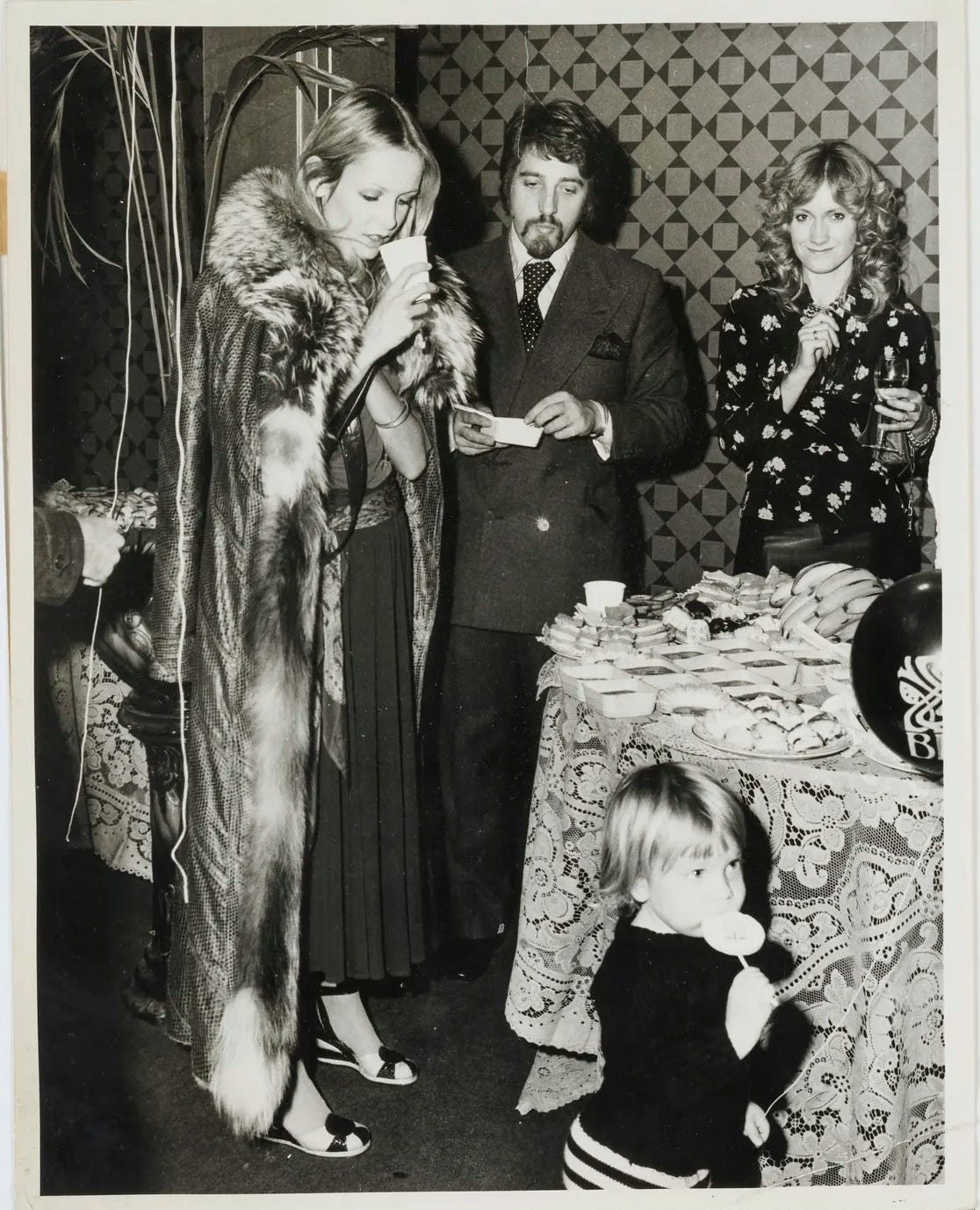
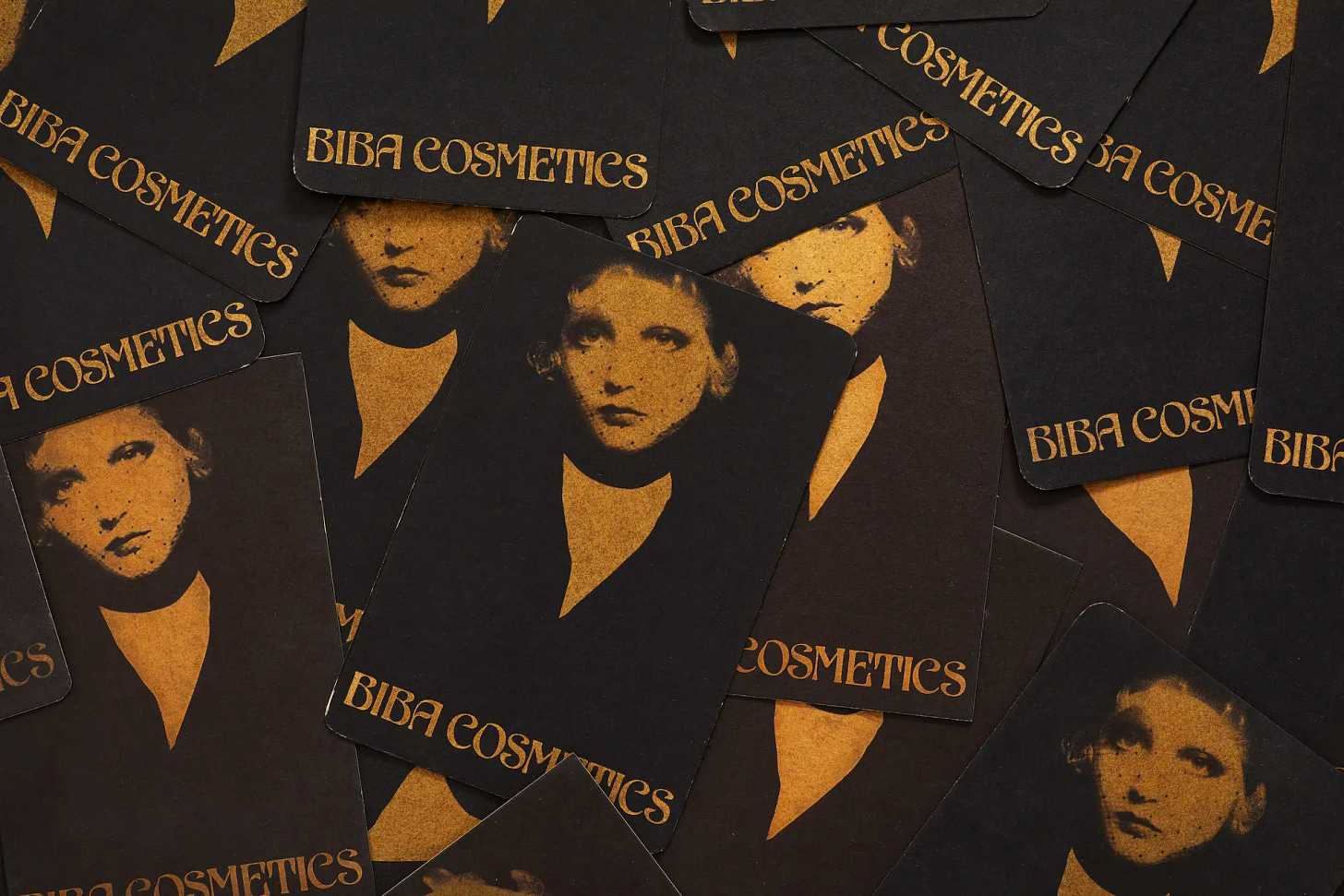
Regardless of when the deal occurred and under what circumstances, once settled Barbara and Fitz sat down with the design team of Whitmore Thomas (Steve Thomas and Tim Whitmore), who had recently started working with Biba—designing the Art Deco-inspired cosmetics display units now found in 50+ Dorothy Perkins stores nationwide (Hulanicki’s memoir states 300 stores, but contemporary news reports place that number closer to fifty). Those free-standing, completely mirrored units helped present and reinforce the Biba aesthetic, no matter the surroundings; Barbara and Fitz felt they represented a good blueprint for what might be possible at Bergdorf’s. Hulanicki asked them to design a larger unit that could incorporate much more of the total Biba look—not just the cosmetics, but jewelry, hosiery, t-shirts, handbags, boots, and more—that could be placed within a room designed to replicate the vibe of the 120 Kensington High Street store.
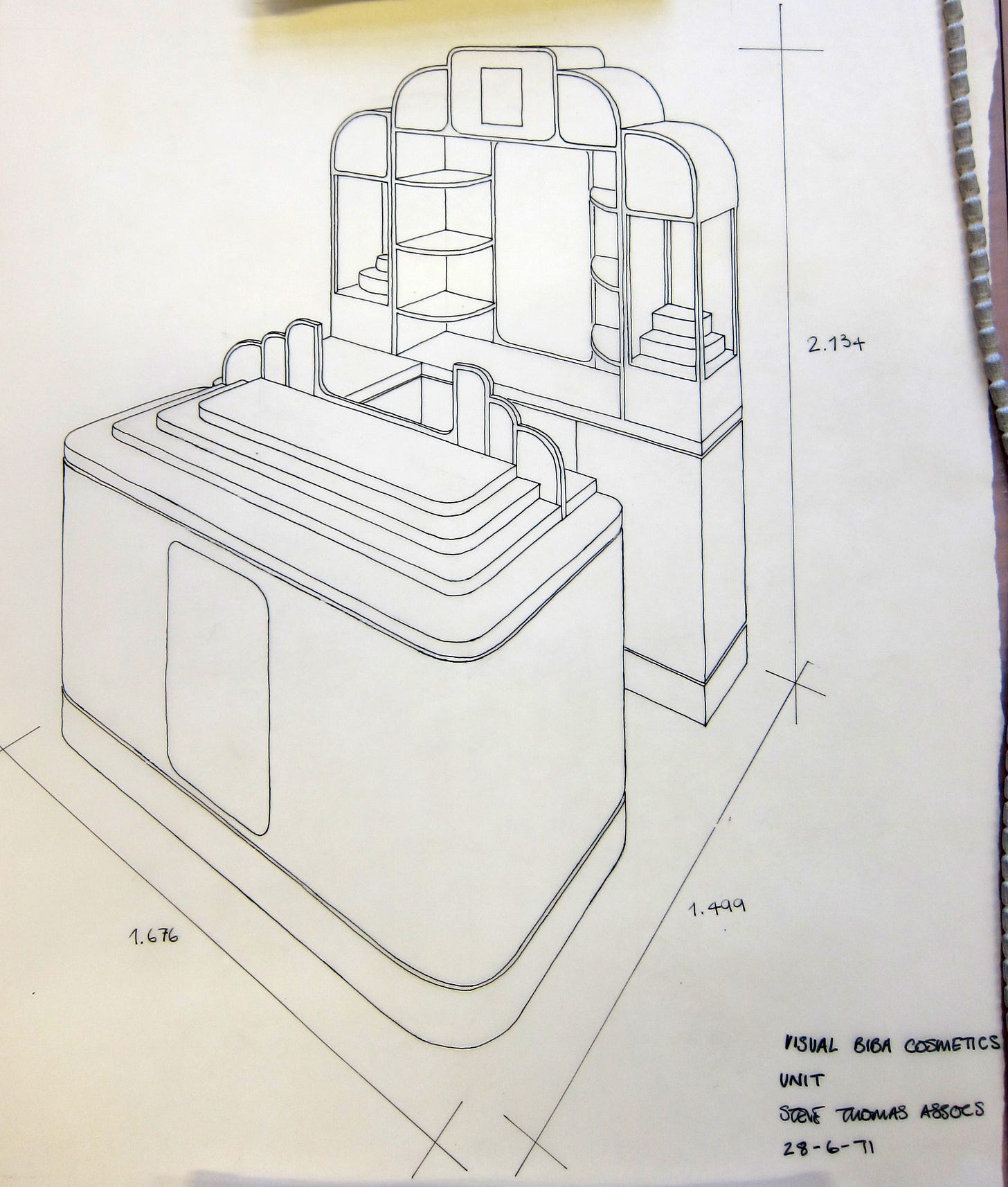
Biba’s paper archive from 1970 to 1975, mainly pertaining to the two Kensington High Street stores (120 and “Big Biba”), is now part of the Archive of Art and Design at the Victoria & Albert Museum, London. Previously held at Blythe House, an enormous Edwardian Baroque in Olympia, the Archive of Art and Design will soon be housed at the V&A East Storehouse in Stratford, opening on May 31st, and available to see by appointment for researchers. Below are photos I took thirteen years ago of the original Whitmore Thomas designs and plans for Biba at Bergdorf Goodman. The large, free-standing unit can be seen from above and the front, allowing a 3D understanding of the unit in space.
Keep reading with a 7-day free trial
Subscribe to Sighs & Whispers to keep reading this post and get 7 days of free access to the full post archives.

